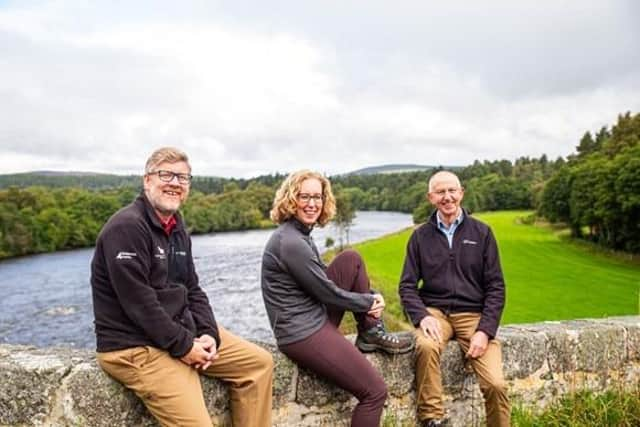Funding for Cairngorms National Park conservation projects


Part of the Scottish Government’s Nature Restoration Fund, the Cairngorms National Park Authority and Loch Lomond and the Trossachs National Park Authority have been awarded a share of the funding to support ecological restoration and species recovery projects in their areas.
Biodiversity Minister Lorna Slater recently made the announcement on a visit to the Cairngorms National Park.
Advertisement
Hide AdAdvertisement
Hide AdShe said: “Scotland’s National Parks are unique places that provide so many benefits for nature, climate and people. Both Parks have a vital role to play in securing a more sustainable future for Scotland and helping us meet our ambitious target to restore biodiversity by 2045.
“This new funding will help achieve landscape-scale conservation of species and habitat across our National Parks, helping some of Scotland’s most special wildlife to thrive – including farmland wader bird populations, such as curlews and oystercatchers, and a rare and endangered species of aspen. It will also help support smaller, grass roots initiatives and inspire everyone to play their part in restoring nature.
The Cairngorms National Park is home to 25 per cent of Britain’s threatened bird, animal and plant species and is one of the most important areas for nature conservation in the UK.
Protecting and enhancing these special habitats and species – as well as tackling the climate emergency – are at the core of the park’s Partnership Plan.
Advertisement
Hide AdAdvertisement
Hide AdBoard convener Sandy Bremner said: “From large, headline projects to small community endeavours, the extra resource is greatly appreciated and will be carefully targeted to ensure the very best outcomes.
Of course, what is good for nature is good for people. Investment in ecological restoration and species conservation projects provides an economic boost locally, with funding used to pay for contractors, surveyors and other land-based workers.”
The type of projects that funding will be directed towards include landscape-scale partnerships that are helping to deliver nature restoration – while integrating successfully with land management businesses. Investment will also be made in innovative solutions that tackle the nature crisis and continue to build momentum for practical solutions such as sustainable moorland management and integrated peatland, woodland and freshwater restoration at catchment scale.
Funding will also support long term projects and partnerships with capital finance, allowing Park Authorities to move away from the current process of awarding a series of annual grants. Instead a system that increases operational capacity and resilience that secures wider funding opportunities will evolve – helping to reduce the dependency on public funds while still delivering for nature.
Advertisement
Hide AdAdvertisement
Hide AdGrant Moir, Cairngorms National Park Authority chief executive, added: “This is the UN Decade of Ecosystem Restoration and time is of the essence. This funding combined with our existing programmes and working with our full range of partners will help to deliver on the ground the sort of changes that are needed to halt biodiversity loss and start to see a positive turnaround by 2030. Working through our Cairngorms Nature partnership – which is open to all – we aim to build a community of restoration activity across the Park.
“Nature based solutions that tackle the climate emergency as well as restoring habitats on a landscape scale, species focused conservation efforts and projects that give communities ownership of how their local area is conserved and enhanced for the future will all be realised as a result of this extra funding for the wildlife and nature of the Cairngorms National Park.”